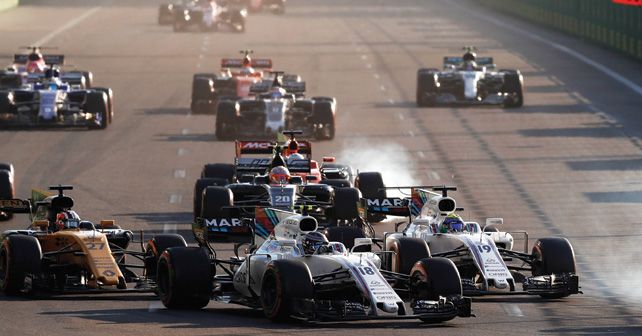
What’s the difference between F1 and the virtual world? F1 is real, wild, and very addictive. Take it from Joe – a man who’s attended the last 520 races.
I was very pleased to see that the Formula One group is going to start marketing the sport, with advertising designed to show the non-followers of F1 about the wild nature of the sport. Watching F1 on television is one thing, but it doesn’t always grab the viewer in the same way that going to a race does.
If you’ve never been to an F1 race you probably won’t understand, but if you’ve sat (or stood) and watched the cars arrive on the first lap of a Grand Prix you’ll know the excitement I’m talking about. Your one thought is: “Wow! These guys are all crazy!” But you find that you love it. You’re hooked and you come back again, when you can. And you dream of going to places like Monza and Monaco to see the action there.
The lucky ones can afford it. I’m incredibly lucky because I’ve been able to see the last 520-odd Grand Prix and I never tire of them. The starts are always exciting and the more you understand about the races, the more exciting they are. If one watches on TV and listens to commentators one doesn’t get the same sense of excitement, even if they’re good.
Sometimes, if I’m in the mood, I’ll watch the start not by looking at the cars going left and right but rather by looking at the people in the grandstands and see how they freak out when they see it. It’s really amazing. It reminds me of years ago when I took my son, who was then about six, to see monster trucks in action at the Stade de France in Paris. He was so excited he knocked over his drink! That is what F1 is all about, so it’s good to see that the Formula One group has understood that to sell the sport one needs to get people hooked on the visceral nature of the cars. These machines are beasts, and the men who ride them are just a little bit crazy.
Marketing the sport is a real breath of fresh air because in the Ecclestone years the sport had to rely on teams, sponsors, drivers, TV companies, journalists and race promoters to do the promotion. The sport provided plenty of controversy, both on and off the track, and if it went a little quiet Bernie would happily drop a few nuggets to his favoured journalists and they would wind everything up again. Bernie always knew how to get people talking. But getting them talking and getting them feeling the sport are very different things. I’ve always believed that the promoter ought to actually promote, particularly given the huge sums of money that were being sucked out of the sport. Some people say that this was Bernie’s genius, but I never felt it was the best thing for the sport. It worked for him and the people who invested in him, but it was not a long-term strategy.
The new owners of the F1 commercial rights think that traditional promotion is probably a better idea, and I think they’re right. They’ve come up with the concept of “engineered insanity,” which is not at all bad for a first attempt. The idea of putting fans into wind tunnels (I know that there are already fans in wind tunnels, because otherwise they would not work!) is quite a nice way to get across the violence of the sport. Yes, we don’t like the halo, but the cars are fantastic. They are pumping out nearly 1,000hp. They are lapping faster than ever before. They are also the most efficient engines in the history of mankind, and have made an astonishing leap forward in the last four years, lifting the thermal efficiency of engines by around 15% - when it took more than a century to get to 30% before these new engines came along. Even the brightest engineers did not believe that was possible when they sat down to design these things in 2012 and 2013. Often when people go to an F1 race the thing that impresses them most is the braking, rather than the acceleration, but anyone who is not moved when they see the best drivers in the world taking these machines to the absolute limit is jaded indeed.
I was blown away by F1 cars in 1979, and I’m still as keen as I was then. They are different but they are still extreme, and they are still dangerous – even with all the safety that they have today. You can still kill yourself driving one of them, and that’s the big difference between F1 and all the virtual things that people do on computers these days. Virtual is exactly that. It’s not real. F1 is real. And wild – and very addictive.
Joe Saward has been covering Formula 1 full-time for 29 years. He has not missed a race since 1988.
























Write your Comment